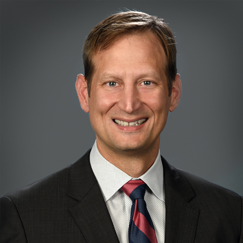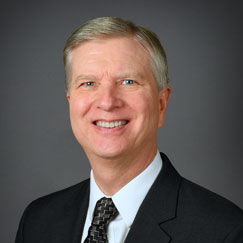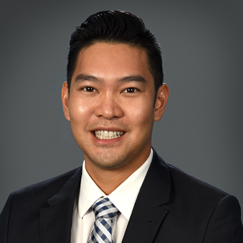The Playbook on Tommy John Syndrome: What Every Athlete Should Know
As an athlete, few phrases can strike fear into the heart as the diagnosis of a ‘Tommy John injury’. For decades, Tommy John surgery has become almost synonymous with competitive sports, particularly those involving the kind of fast-paced, high-stress, and repetitive arm movement that’s a recipe for elbow disaster. But fear not; this is your playbook, your chance to understand the game and make educated decisions about your next steps, whether you’re sidelined with a UCL injury or simply aiming to fortify your arm for peak performance.
Firstly, let’s break it down for the rookies on the field: what exactly is a Tommy John injury? Imagine your arm is a line of dominoes – a complex sequence of kinetic events that must occur in perfect harmony. When the ulnar collateral ligament (UCL) – dubbed the ‘elbow’s MVD’ by the musculoskeletal system – falters, it’s like the domino chain comes to a screeching halt. The result? Pain, reduced function, and one heck of an uncertain future for your athletic endeavors.
But this isn’t the end of your game. Because you’ve got perks on your side, like the Physicians of Orthopedics and Sports Medicine in Coppell (POSMC)—a skilled team that’s the designated MVP in Tommy John injury rehab and recovery. They’re like coaches restoring your playbook, ensuring your arm is stronger and smarter on the field of play than ever before.
Inside the Elbow: A Closer Look at Tommy John Syndrome
To comprehend the significance of a UCL tear, let’s take an anatomical tour within your elbow’s confines. The UCL consists of three bands that function together as the primary stabilizer of the elbow, helping to manage the stress that comes with throwing objects at high velocities – think baseballs, or footballs, for instance.
The most frequent suspects in a Tommy John case are those who repeatedly engage in an overhand throw – namely, baseball pitchers. Over time, these motions can lead to the tiny tears that accumulate within the ligament, eventually leading to a rupture of the tissue. But the Armageddon moment often occurs when an athlete suddenly ups the intensity, frequency, or force of their throws, serving as the catalyst that pushes the UCL beyond its limits.
The Game Plan for Diagnosis
If you’re experiencing persistent elbow pain, it’s time for a huddle with the pros. The diagnosis of a UCL injury often starts with a physical examination, followed by imaging tests like MRI or ultrasound to assess the severity and location of the damage.
How do you know it’s game over for the UCL? Signs and symptoms are clear indicators:
- Elbow tenderness on the inside of the joint
- A popping or tearing sensation upon injury
- Numbness or weakness in the hand or forearm
- Difficulty with gripping and/or throwing
Once the verdict is in, your team – a combo of orthopedists, physical therapists, and perhaps a sports psychologist – will design a strategy tailored to your injury and goals.
Entering the Rehab and Recovery Championship
The road to recovery post-Tommy John surgery isn’t a sprint; it’s a grueling marathon. Immediate rehabilitation is focused on restoring range of motion (ROM), mitigating pain, and preventing muscle atrophy.
Physical therapy will be your main coach in this phase, guiding you through a series of exercises that gradually reintroduce strength and stability to the elbow. Expect a range of activities, from passive exercises where the therapist moves your arm for you, to more active ones where you’ll be hoisting weights and working against resistance.
Rebuilding: The Strengthening Phase
Once past the acute recovery period, the game changes gears. Now it’s about building back and building better – introducing weight-bearing exercises, plyometrics, and proprioception drills that recreate the dynamic demands of your sport in a controlled environment.
POSMC’s facility becomes your training ground, equipped with cutting-edge equipment and techniques aimed at providing a comprehensive recovery experience. This phase is where you’ll feel the most significant strides in your progress, as every exercise contributes to a more resilient UCL and a more forceful, precise throw.
Return to Sport Protocol: Is It Game Time Yet?
The Return to Sport (RTS) phase is the penultimate leg in the journey back to competition. Here, your physical therapist, orthopedist, and sports medicine team will collaborate on implementing an evidence-based plan to transition you from rehab to playing, ensuring the injury doesn’t sideline you again.
This phase isn’t just about clearing hurdles; it’s about resetting your mental game too. A sports psychologist could be an invaluable addition to your team, fine-tuning your confidence, focus, and coping strategies. After all, an injury is never just physical – it’s a psychological readjustment, a redemption arc demanding as much mental fortitude as physical prowess.
Championing Injury Prevention: A Life in the Game
The greatest champions know that winning isn’t just about scoring; it’s about staying in the game. With that in mind, preventive strategies become the playbook’s final chapter.
Your orthopedic and sports medicine team will impart wisdom on the importance of pre- and post-game stretching, the role of proper mechanics in throws, and the use of protective gear when necessary. Athletes who’ve undergone Tommy John surgery often emerge wiser, incorporating lessons about their body mechanics, stress management, and training regimens that keep injuries at bay.
Remember, becoming a shrewd athlete is as much a learned skill as any throw or catch. Take in all the guidance from your team—the medical experts, trainers, and coaches—who are looking out for your long-term well-being. Yes, a Tommy John injury can be a formidable adversary, but with the right care and approach, it can also teach you how to transcend your limits and become the champion you’re meant to be.
If you find yourself facing the specter of Tommy John surgery or in the throes of rehabilitation, look to the coaches at POSMC. They’re there to guide you through the complexity of sport and the extraordinary challenge of bodily recovery, ensuring that you, the athlete, become a testament to endurance and achievement. This is your game, your journey. Let’s play it right.
Dr. Michael S. Howard
Shoulder, Elbow and
Upper extremity
View Bio
Dr. Earl R. Lund
Shoulder, Elbow, Hand and Wrist
View Bio
Dr. Thanh Le
Elbow, Hand and Wrist
View Bio



